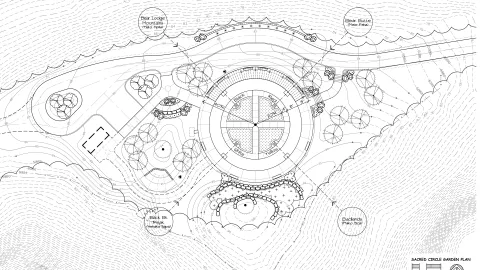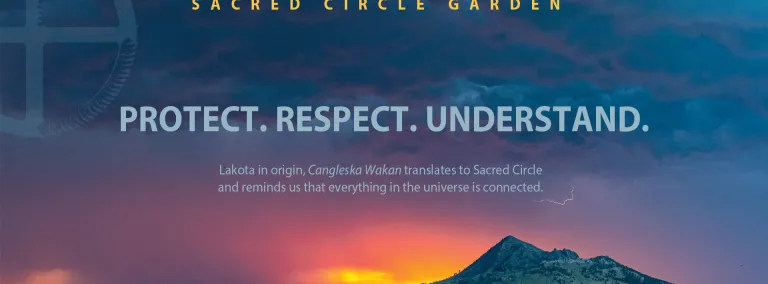Sacred Circle Garden design 100% complete
SURF’s vision to build a cultural and educational ethnobotanical garden space is now rendered in complete detail
Since the inception of the Sacred Circle Garden initiative, the vision has been clear: create an ethnobotanical garden honoring the history of the Black Hills, or Paha Sapa or He Sapa, and the connections we all share. Now, this vision is captured in a complete architectural design.
Designworks Inc., a Rapid City landscape architect, completed the 100% design this month, rendering the features of the future Garden in detail.
“This design was created through conversations with tribal elders and our ad hoc committee, which included members from across the state of South Dakota. With their input and ideas, we’ve worked with the architect to achieve the 100% design,” said Staci Miller, director of the Sanford Underground Research Facility (SURF) Foundation.

The Sacred Circle Garden will be located on a hilltop meadow at SURF. Primary features of the Garden include a medicine wheel and native grasses and plants. Located in the heart of the Paha Sapa, or He Sapa, the Garden will highlight four significant areas: Mato Paha (Bear Butte), Mato Tipila (Bear’s Lodge/Devil’s Tower), Hehaka Sapa (Black Elk Peak) and the Mako Sica (Badlands), all sacred sites for the Lakota and other regional tribes. "Sacred Circle" translates to Cangleska Wakan in Lakota.
“As a Lakota, I see strong connections between the Lakota way of understanding the universe and the research being done at SURF,” said Jace DeCory, a member of the planning committee. “I whole-heartedly support the efforts to build the Cangleska Wakan, where Tribal and all people can interact and connect with the Black Hills in a respectful way.”
The Garden will be used as a space for educational and cultural events for k-12 students, as well as adults. Miller said potential events could include master gardening, astronomy and stargazing, the history and uses of South Dakota’s native plants, Earth science education and Native American cultural events. “The Garden offers a space to bridge the science that's happening a mile underground at SURF with the science that Indigenous peoples of the Black Hills have known for centuries,” Miller said.
“This is a keystone project,” said Casey Peterson, ex officio member of the SURF Foundation board of directors and major donor to the initiative. “It’s a demonstration to our local community, to our Indigenous neighbors and to the world that we honor and respect this land. This space will offer a place of connection and cultural exchange for everyone who visits.”
With the complete design in hand, the Garden is one step closer to becoming a reality. Through individual donations, corporate sponsorship, fund-raising events and a campaign offering limited-edition prints, the SURF Foundation has raised $449,771.59 of the $800,000 goal.
Dana Dykhouse, emeritus member of the SURF Foundation board of directors and major donor to the initiative, said he hopes to inspire others to share in the vision for the project.
“For all of us who hold the Black Hills in high esteem, both our Native community and those of us who have come later, the Garden will provide a place to reflect on the history of this region and what it could be in the future,” Dykhouse said.
With the Garden design complete, sharing the vision has become 100% easier. To make a donation to the SURF Foundation or learn more, contact Staci Miller or visit the Sacred Circle Garden webpage.
